Sorted by date Results 1 - 24 of 24
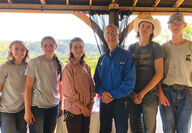
This year the Whitehall Project consisted of four WHS students, an MCC AmeriCorps volunteer, and the project coordinator Todd Breitenfeldt. This week, all the high school students are finished working for the program, they are off to the fair, sports, and then back to school. They are Lexi Stratton, Kaylee Klapan, Izaya Howlett, and Austin Bonnet. Our intrepid MCC AmeriCorps volunteer Ava Franz is heading back to college in Washington State. The Whitehall Biological Weed Control Project started...
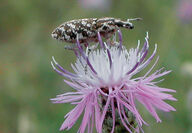
It's Cypho Season! The Whitehall Project is soon going to start collecting spotted knapweed root boring weevils (Cyphocleonus achates). These weevils are starting to emerge from the roots as collectable adults. This is a bit earlier than usual because of the hot weather we have been having. Spotted knapweed is a short-lived perennial plant with a tap root. If you hand pull it and get most of the root you will kill it. Wear gloves and a long-sleeved shirt when pulling knapweed. Always bag and dis...
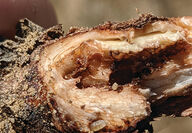
Another nasty noxious weed is houndstongue (Cynoglossum officinale). It seems our North American attempts to control this weed are becoming a somewhat sensational secret success story! Let's describe the weed first. Houndstongue is a biannual (grows for two years) plant. In the first year, the seed sprouts and grows a basal rosette (a ring of leaves near the ground) and a deep tap root. During the second season, the plant uses the energy and nutrients stored in the carrot-shaped tap root to...
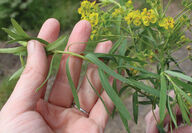
We are into summer now, and the weeds are showing their ugly or pretty heads. The Whitehall Biological Weed Control Project is finished with whitetop flower mites, yellow toadflax stem-boring weevils, and Dalmatian toadflax stem-boring weevils. Next, we will be monitoring for and collecting/releasing leafy spurge flea beetles and the red-headed leafy spurge root/stem-boring beetle. Leafy spurge is a deep-rooted perennial plant invader from Eurasia. It has a latex-filled milky white sap that can...

The Whitehall Biological Weed Control Project (based in Whitehall) of Jefferson County is in full swing for the summer season. The high school-aged students have now started working, and we are busy taking care of the insectary at the Whitehall football field next to the I-90 Whitehall exit, collecting and releasing biocontrol insects, and monitoring for landowners to see how the insects are impacting their noxious weeds. The whitetop mite and the yellow toadflax stem boring weevil release...
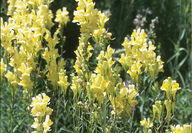
A weed is any plant that grows where you don't want it to grow. A noxious weed is a plant that causes environmental and/or economic damage. The Whitehall Project has now made six releases of the whitetop (hoary cress) flower galling mite (Aceria drabae) in the Whitehall Area. We are excited about the future potential of this bioagent. Time will tell... Our next insect available in small numbers is the yellow toadflax stem boring weevil (Mecinus janthinus). Yellow toadflax (butter and eggs) is...
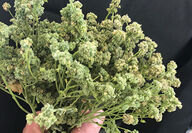
The Whitehall Biological Weed Control Project of the Jefferson County Weed District has already started up in a small way this spring. We hired an Americorp MCC Conservation Intern, Ava Frans, from Walla Walla, Washington, who will work with the crew until mid-August. She is a sophomore at Whitman College majoring in Environmental Science and Biology. We also have returning college student Brynna Wolfe (who has worked several years for the Whitehall Project) splitting her time helping Jill...

We are finished with leafy spurge insects and most of the crew will be finished working this week for the summer as they start school and sports. We have now collected about 60 releases of spotted knapweed root boring weevils Cyphocleonus Achates and have requests for 100+. Hopefully, we can meet these requests. These neat beetles (weevils are long-nosed beetles) are collected one at a time by hand, 100 per release. The insects are only up and out of the soil in collectible numbers when the...

The Whitehall Bio Control team managed to collect all 120+ releases of leafy spurge flea beetles. Thank you to the local landowner who allowed us to collect on their fine property. This week we have a bit of a lull in insect collections as the toadflax and spurge insects are finished and the spotted knapweed insects have not emerged in great enough numbers to be collectable. We will clean up the insectary at the high school and monitor past and future release sites. We are hearing from many...

Our summer is quickly moving along. The toadflax insects are finished. All the adults have laid eggs, and most have died of old age. We are in the middle of collecting leafy spurge flea beetles (Aphthona spp.) and are doing well with numbers. Next week we hope to start collecting spotted knapweed root boring weevils for the many requests we are receiving. We tried going to a former good flea beetle site in Missoula that we have collected from before however, it also is crashing so we only...

We were not able to fill all our requests for Dalmatian toadflax insects. The adult weevils are now about finished laying eggs and are dying of insect old age. Part of the reason was the wet, cool weather. Another major factor was the damage the stem-boring weevil Mecinus janthiniformis has been doing to our collection sites! They are really hammering the toadflax along the I-90 corridor from Missoula east past Clinton and along the I-15 corridor from Helena south to Boulder. It is very...

Because of the continued cool, wet weather, we are continuing to collect the Dalmatian toadflax stem boring weevil Mencius janthiniformis. We have requests for over 70 releases and have only been able to collect 10 releases so far. We will be trying to collect more this week as the weather warms. Wish us luck! It is very heartening to see how much damage these skinny little black weevils are doing to Dalmatian toadflax along the I-90 corridor in the Missoula area and along the 1-15 corridor betw...

The crew is having a hard time finding many Dalmatian toadflax stem-boring weevils so far this spring. We have had good collections in the Missoula and Clinton areas for the past several years. This year we went there on June 14th to collect and the cool wet, windy weather plus the site crashing made it hard to find many weevils. The site "crashing" means that many of the weeds have been killed by the bioagent so because of a lack of food, there are not many insects left to collect. This is...

The Whitehall Biological Weed Control Project (Whitehall Project) is part of the Jefferson County Weed District. Jill Allen is the Jefferson County Weed Coordinator. Todd Breitenfeldt is the Whitehall Project Coordinator. The Assistant Coordinator is Brynna Wolfe and the crew members are Lexi Stratton, Reed Zander, Austin Bonnet, and Izaya Howlett. This week we are collecting Dalmatian toadflax stem boring weevils (a weevil is a beetle with a long snout) in the Missoula area. We give these...

The Whitehall Biological Control Project (Whitehall Project) has existed since the early 1990s and is based out of Whitehall Schools. It is associated with the Jefferson County Weed District. Jill Allen is the Jefferson County Weed Coordinator (406-225-4165) and Todd Breitenfeldt is the Whitehall Project Coordinator. The Project hires Whitehall area high school and early college/trade school students and deals mostly with insects, as well nematodes, mites, and fungi (biological control agents)...

The Whitehall Biological Control Project of Jefferson County will be collecting Dalmatian toadflax stem boring weevils (Mecinus janthiniformis) these next few weeks. These insects effect only the noxious weed Dalmatian toadflax. The adults are emerging now, and they damage the leaves. They lay eggs on the stems of the plant and the larvae mine (eat tunnels) within the stem. The larvae cause the most damage. If you would like a release for your land, please contact us during normal business...

We have much going on this summer. Here is a short summary of what we are doing. If you would like your land to be involved in any of this, please message us on our Whitehall Biological Weed Control Project Facebook page or call during normal business hours: Alycia: 406-565-3995 or Todd: 406-498-5236. 1. Leafy spurge: We will be collecting leafy spurge flea beetles July 7-8th near Grass Range. We have well over 100 requests for releases, but if you are interested in one contact us and we will...
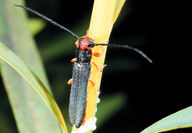
Leafy spurge is a perennial noxious weed that has sticky, milky white sap. The sap can cause a bad reaction if it gets in people's eyes or on their skin. Cows and much of our native wildlife will not regularly graze it, but sheep and goats can be taught to like it. Spurge has a very deep and extensive root system so pulling or burning it do not work. There are herbicides that work well if used correctly, contact your County Weed Coordinator for information, equipment, and chemicals. The...

Dalmatian toadflax (Linaria dalmatica) and yellow toadflax (Linaria vulgaris) are two closely related state designated noxious weeds that were inadvertently brought over from Eurasia. Both damage farming, range lands and wildlands. They have yellow flowers that look like garden snapdragon flowers which they are also closely related to. We deal with one insect that eats Dalmatian toadflax. The insect is the Dalmatian toadflax stem mining weevil Mecinus janthiniformis. We will be collecting these...

As you probably know, the nasty invasive weed houndstongue (Cynoglossum officinale (Boraginaceae)) has small oval/flat seeds that stick to about everything. I have spent countless hours combing them out of my Brittanys fur after bird hunts (spray-on cooking oil helps but then you must bathe your dog after that...). My Father and I shot two elk one season several years ago who's head/necks were covered with houndstongue seeds. We hunt that area often and knew of no houndstongue plants within...
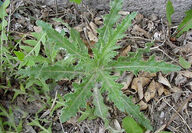
The Whitehall Biological Weed Control Project is up and running this season, modified a bit of course for COVID safety. Our first order of business is looking for 8-10 Canada thistle fungus release sites. This will entail two visits to each site. One now (May/early June) to set up a long-term sampling transect. The second visit will be in September/October to infect the plants with the fungus. Many Montana sites are showing fairly severe damage to the Canada thistle patches the season after the...

The Whitehall Biological Weed Control Project has had a busy year. We started June 1st and have collected/released the following numbers so far: Mecinus janthiniformis (Dalmatian toadflax stem weevil, collected near Missoula and Helena): 4,100 = 41 releases. Collection season done. Jaapeilla ivannikovi (Russian knapweed gall midge, from the Whitehall insectary): 30 galls (a gall is a swelling on the plant that contains multiple larvae) = 10 releases. Collection season done. Aulacidea acroptiloni...

There are 6 species of flea beetles approved for release on leafy spurge. They are: Aphthona abdominalis Aphthona cyparissiae Aphthona czwalinae Aphthona flava Aphthona lacertosa Aphthona nigrascutis They are a very small beetle with a back "hopping" leg somewhat like a grasshopper. Some of these species are black, and some are coppery brown. The adults emerge from the soil from mid-June to mid-July in Montana. Adult feeding creates many holes and chewed edges on spurge leaves. They make an...

After a decade of being a not-for-profit organization, we are back under the auspices of the Jefferson County Weed Board and Jefferson County. We are pleased to be working under the direction of Jefferson County Weed Coordinator Jill Allen. We received a Noxious Weed Trust Fund grant as usual and are receiving monies/voluntary donations from the Montana Department of Transportation, State DNRC, other counties and agencies and of course, the numerous wonderful landowners to whom we provide...